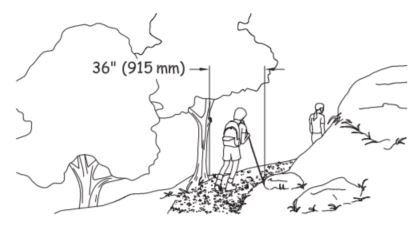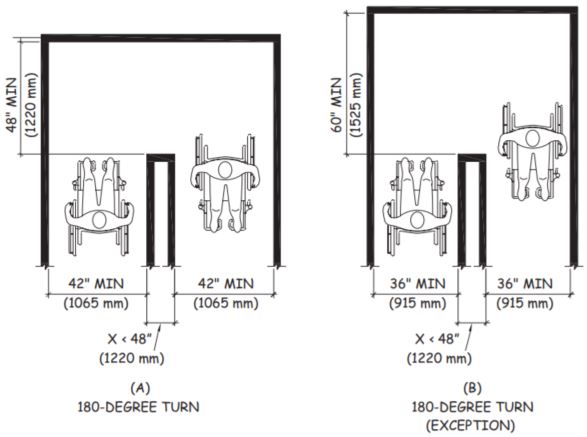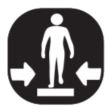Outdoor Developed Areas: A Summary of Accessibility Standards for Federal Outdoor Developed Areas
Clear Tread Width [1017.3]
The clear tread width of trails must be a minimum of 36 inches (figure 2). The 36-inch-minimum clear tread width must be maintained for the entire distance of the trail and may not be reduced by gates, barriers, or other obstacles unless a condition for exception does not permit full compliance with the provision.

Figure 2—Minimum clear trail tread width.
Where gates and barriers require users to make 90-degree or 180-degree turns, sufficient space should be provided for people using mobility devices to make the turns (figure 3). Mobility devices that are used in the outdoors typically have a longer wheel base and are wider than mobility devices that are used indoors. The Access Board and National Institute on Disability and Rehabilitation Research sponsored research to collect anthropometric data from a sample of about 500 people who use manual wheelchairs, power wheelchairs, and scooters. The Center for Inclusive Design and Environmental Access in the School of Architecture and Planning, University at Buffalo, The State University of New York conducted the “Anthropometry of Wheeled Mobility Project.” The final report for this project is available at www.udeworld .com/documents/anthropometry/pdfs/AnthropometryofWheeledMobility Project_FinalReport.pdf. The report recommends that, in order to accommodate 95 percent of the users of manual wheelchairs, power wheelchairs, and scooters in the project sample, a minimum clear width of 43 inches is needed to make a 180-degree turn around a barrier similar to a chicane-style gate.

Figure 3 - 403.5.2 Clear Width at Turn


User Comments/Questions
Add Comment/Question